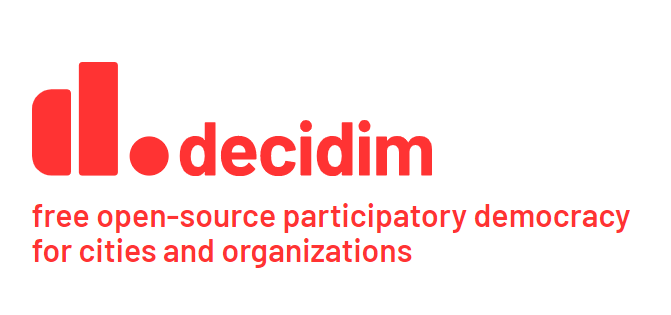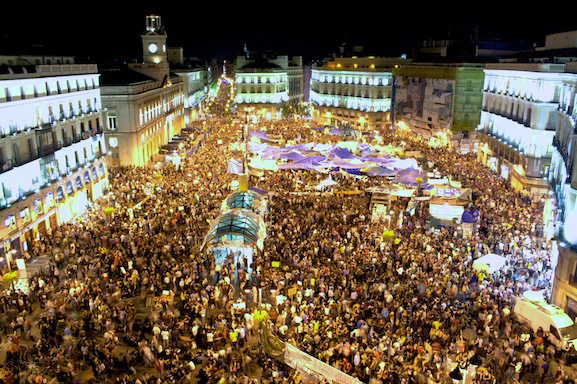New digital platforms for citizens' initiatives, such as Decidim, are becoming more popular. Adrian Smith and Pedro Prieto Martín argue that the technology itself should also be developed in a democratic way, thereby ensuring such instruments can establish themselves as tools for democracy in today’s digital societies
On Wednesday 18 January 2023, a pan-European citizen jury voted Barcelona the first European Capital of Democracy. Barcelona has a rich history of official and citizen initiatives in political and economic democracy. One received a special mention from the jurors. That initiative is Decidim.
Decidim is a digital platform for citizen participation. Through it, citizens can propose, comment, debate, and vote on urban developments, decide how to spend city budgets, and design and contribute to local strategies and plans.

Launched in 2016, more than 400 organisations around the world have since used the platform. What makes Decidim stand out, according to our research, is developer commitment to democratising technology development itself and embedding it within struggles for democracy offline and online. Decidim holds important lessons at a time when the monopolisation of social media by corporate power presents democrats with so many challenges.
Lessons began in 2011, when hacktivists joined the 15-M anti-austerity mobilisations in squares and streets around Spain. As Alberto Corsín Jiménez and Adolfo Estalella wrote at the time, this horizontal protest movement brought together individuals and groups that had not organised collectively before.

Digital technologies were an important device for connecting debates and activities across neighbourhood assemblies. The new digital media enabled activists to bypass pejorative protestor caricatures in conventional media and explain what was happening in the squares directly to the wider public. This, in turn, encouraged more people to join.
Digital media enabled activists to bypass conventional media, and communicate directly with the wider public, encouraging more people to join their cause
Among the camps and assemblies, hacktivists trained people in the use of digital tools for documenting agreements. They taught people how to formulate proposals online, and to organise grassroots activism across a kaleidoscope of issues. In tandem with social activists, hacktivists learnt how to develop better their ‘political media’.
New political parties emerged from the movement. These parties decided to contest elections and bring their direct democratic energy into the tired institutions of representative democracy. Party activists combined deliberative practices learned in the assemblies with their new digital capabilities for large-scale collaboration to develop manifestos openly.
When these parties won local elections across Spain in 2015, including in Barcelona, new opportunities opened up for their democratic innovations. However, members of these new parties also faced administrative inertia from people less excited by the democratising energy emanating from the streets.
Social movement parties working within and against the local state is the context in which Decidim developed. The material resources available to representative democracy gave a boost to innovations in deliberative and direct democracy. Technopolitical activists used digital technologies to bring collective political action and new democratic practices into city authorities.
Developers in Barcelona collaborated with similar technologically-enabled innovations in democracy in other cities, such as Madrid, and even as far afield as Iceland and Taiwan. Important differences in detail, context and history exist between these platforms. What makes Decidim stand out is a technopolitical ethos to open-source development using free software.
Technopolitical developers bring a sociological understanding of technology into its development. They recognise that technologies are never neutral tools. The design, development, ownership and use of such platforms inevitably makes assumptions about how societies (and democracies) work. Platform development requires decisions about who is expected to do what with the technologies, how they might benefit, where that occurs, and why it is desirable. Ostensibly technical decisions involve political choices.
Technopolitics holds that democracy needs to be central to the technology process. With Decidim, anyone can scrutinise the code and procedures involved
Technopolitics holds that democracy needs to be central to the technology process. With Decidim, anyone can scrutinise the code and procedures involved. Decidim convenes public fora for debating issues and reflecting upon experiences. These fora invite collaboration for new additions and developments. Such technological self-determination is critical for adapting to issues arising in the implementation of these platforms.
Moving from a platform for activism to enabling citizen participation in city administration presented challenges. Imaginative offline activities have had to cultivate incentives for less-committed citizens to turn to the platforms. These activities also needed to encourage integration with established processes of public consultation in urban policy.
Decidim has been used alongside neighbourhood-scale activities and issue-generating workshops. It is possible to extend and deliberate the results of these face-to-face activities more widely online. To work well, Decidim needed city administrators to open up to new inputs and scrutiny. With careful negotiation, Decidim activists reassured administrators that the new platforms would enrich their public roles rather than threaten them with fresh intrusions.
The discussion threads, thematic clustering, votes, videos, hyperlinks, texts, notifications, and other features in Decidim carry certain assumptions about how democracy works. Limitations are challenged and complemented when they encounter (and rely upon) offline processes that work for democracy in other ways. Supplementary processes are turned to in order to build up the value of participation itself and the capacity for deliberation. Monitoring and accountability mechanisms have been added to the platform, so that citizens can use Decidim to track the progress of city authorities' decisions.
Activist use of participatory tools propelled a new generation of politicians into representative democratic institutions
Important and difficult work takes place in this messy interplay between the platform, public administration and wider democratic representation and struggles. Democratic movements inspired Decidim, and still provide its normative coordinates. Activist use of participatory tools propelled a new generation of politicians into representative democratic institutions. Their offices provided resources for the movement's reforming mandate, and for Decidim.
Decidim has encouraged wider public use by taking the platform back to the streets and using it alongside offline methods to engage people in issues that matter to them. None of these developments has been perfect in terms of democratic theory. A clash of ideas, practices and disputes over democracy has shaped developments. Democratic interoperability has been key.
A plug-and-play platform bought off the shelf for consultation services does not work like Decidim. Decidim’s technology and process is adaptive, responsive and cared for by users. In short, it is democratic. As one developer explained during our research interviews, city authority support was helpful, but the free/libre technologies remain, fundamentally, tools for citizen activists.
Decidim has been used by energy cooperatives, neighbourhood associations, universities, trades unions and others to support their own democratic innovations. It is precisely because so few authorities are ‘capitals of democracy’ that people continue to innovate in relation to new tools for democracy. And, like democracy itself, these tools are a perpetual work in progress.
[…] Adrian Smith and Pedro Prieto Martín, ‘Decidim: why digital tools for democracy need to be developed democratically’, The Loop, March 14 2023. https://theloop.ecpr.eu/decidim-why-digital-tools-for-democracy-do-not-need-to-be-developed-democrat… […]